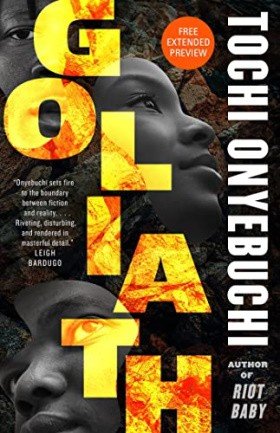Virginia Eubanks and her work has informed much of how I’ve tried to imagine the digitization and mechanization of oppression in this story set mere decades from now. I cannot recommend highly enough her book, Automating Inequality: How High-Tech Tools Profile, Police, and Punish the Poor.
The Church of the Nativity described in the scene at the Assawoman Bay refugee camp is modeled in part on the Church of the Nativity in Bethlehem in the West Bank. Parts of the Assawoman Bay refugee camp bear intentional resemblance to the Aida refugee camp, also in Bethlehem. Both are places within which I was fortunate to have stood in person.
For a greater general understanding of urban planning, I consulted, among others, figures with diametrically opposed visions of cities, their function, and their futures. Robert Moses, as chronicled in Robert Caro’s The Power Broker, quite literally shaped New York City to fit his whims, treating neighborhoods and the urban projects that would destroy them less as something meant to serve the city’s residents and more as a sandbox for monuments to his supposed greatness. On the other end of the spectrum stands Jane Jacobs, urbanist and critical thinker behind The Death and Life of Great American Cities and whose smaller works, collected in Vital Little Plans, did more than anything else to reshape how I think about the metropole and all the different ways a city can be occupied. The work of Ruth Wilson Gilmore also pushed me to better see the ways in which environmental racism and the racialized carceral complex in the United States are braided together and how justice movements in both arenas are and should be intertwined. For a deeper awareness of the history of housing segregation in the United States, I would be remiss not to recommend Richard Rothstein’s The Color of Law: A Forgotten History of How Our Government Segregated America. I owe much of my education in housing insecurity, its myriad causes, and legion consequences to Matthew Desmond’s Evicted: Poverty and Profit in the American City.
The two lines of song Michael and Linc speak to each other in “Summer” come from the ScHoolboy Q song featuring A$AP Rocky, “Hands on the Wheel,” a song I fully expect to last through any impending climate-induced apocalypse.
My sincerest thanks to Jeannie Chan, Leigh Bardugo, and V. E. Schwab. Knowing you sustains me.
A hundred other thinkers and storytellers—among them, Arundhati Roy, Malcolm Lowry, Leslie Jamison, Jesmyn Ward, Mohsin Hamid, Roberto Bolaño, and Gene Wolfe—influenced the crafting of this book, and to them, I am indebted. As well as to you, Zack Fox.
ALSO BY TOCHI ONYEBUCHI
Beasts Made of Night
Crown of Thunder
War Girls
Rebel Sisters
(S)kinfolk: Chimamanda Ngozi
Adichie’s AMERICANAH (nonfiction)
ABOUT THE AUTHOR

TOCHI ONYEBUCHI is the author of the young adult novel Beasts Made of Night, which won the Ilube Nommo Award for Best Speculative Fiction Novel by an African; its sequel, Crown of Thunder; and War Girls. His novella Riot Baby, a finalist for the Hugo, Nebula, Locus, Ignyte, and NAACP Image Awards, won the New England Book Award for Fiction and an Alex Award. He holds a B.A. from Yale, an M.F.A. in screenwriting from the Tisch School of the Arts, a master’s degree in economic law from Sciences Po, and a J.D. from Columbia Law School. His fiction has appeared in Panverse Three, Asimov’s Science Fiction, Obsidian, Omenana, Uncanny, and Lightspeed. His nonfiction has appeared on Tor.com and in Nowhere, the Oxford University Press blog, and the Harvard Journal of African American Policy, among other places.
Visit him online at tochionyebuchi.com, or sign up for email updates here.
Twitter: @TochiTrueStory
Thank you for buying this
Tom Doherty Associates ebook.
To receive special offers, bonus content,
and info on new releases and other great reads,
sign up for our newsletters.
Or visit us online at
us.macmillan.com/newslettersignup
For email updates on the author, click here.
CONTENTS
Title Page
Copyright Notice
Dedication
Part I: Summer
Part II: Fall





























